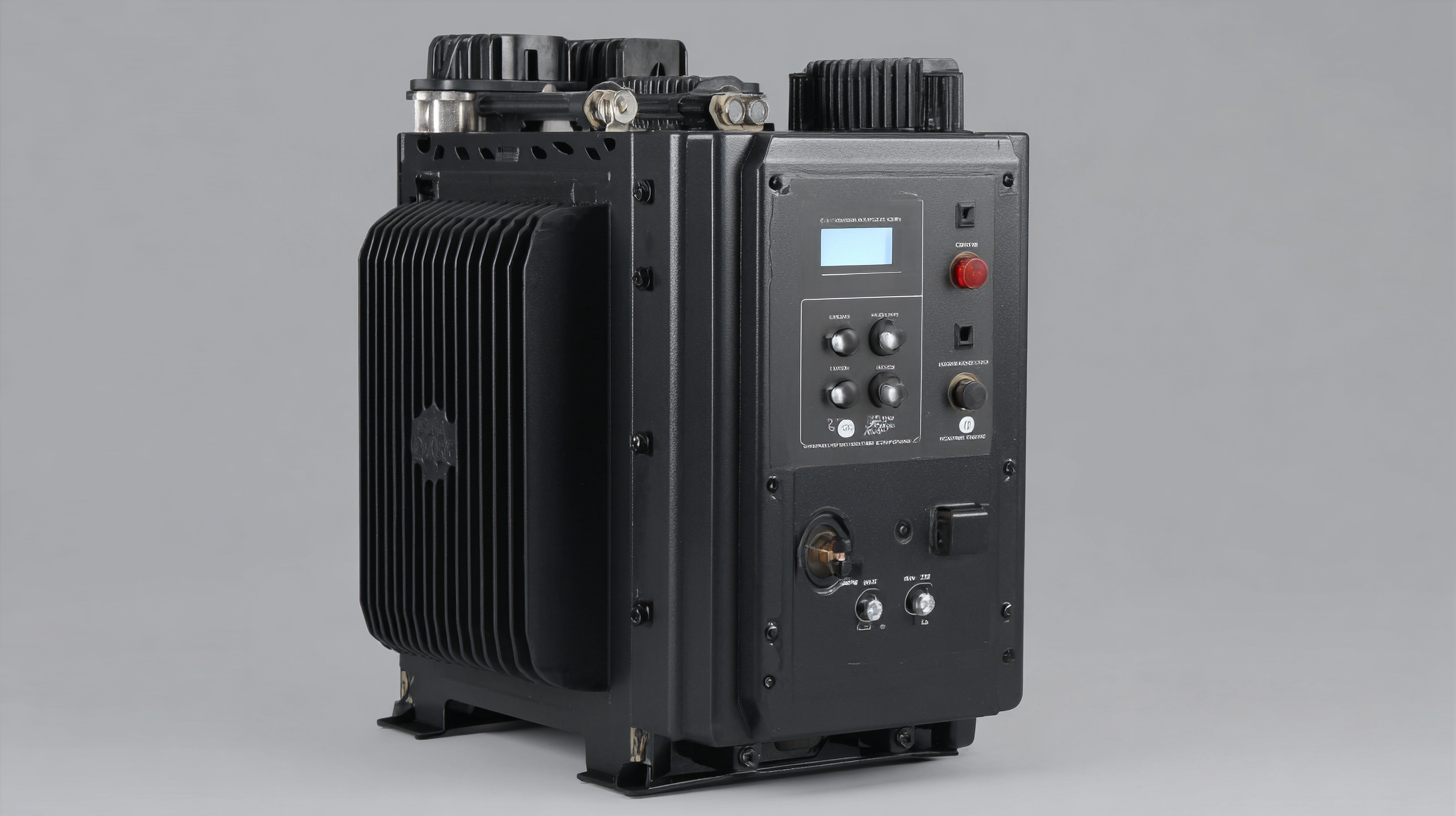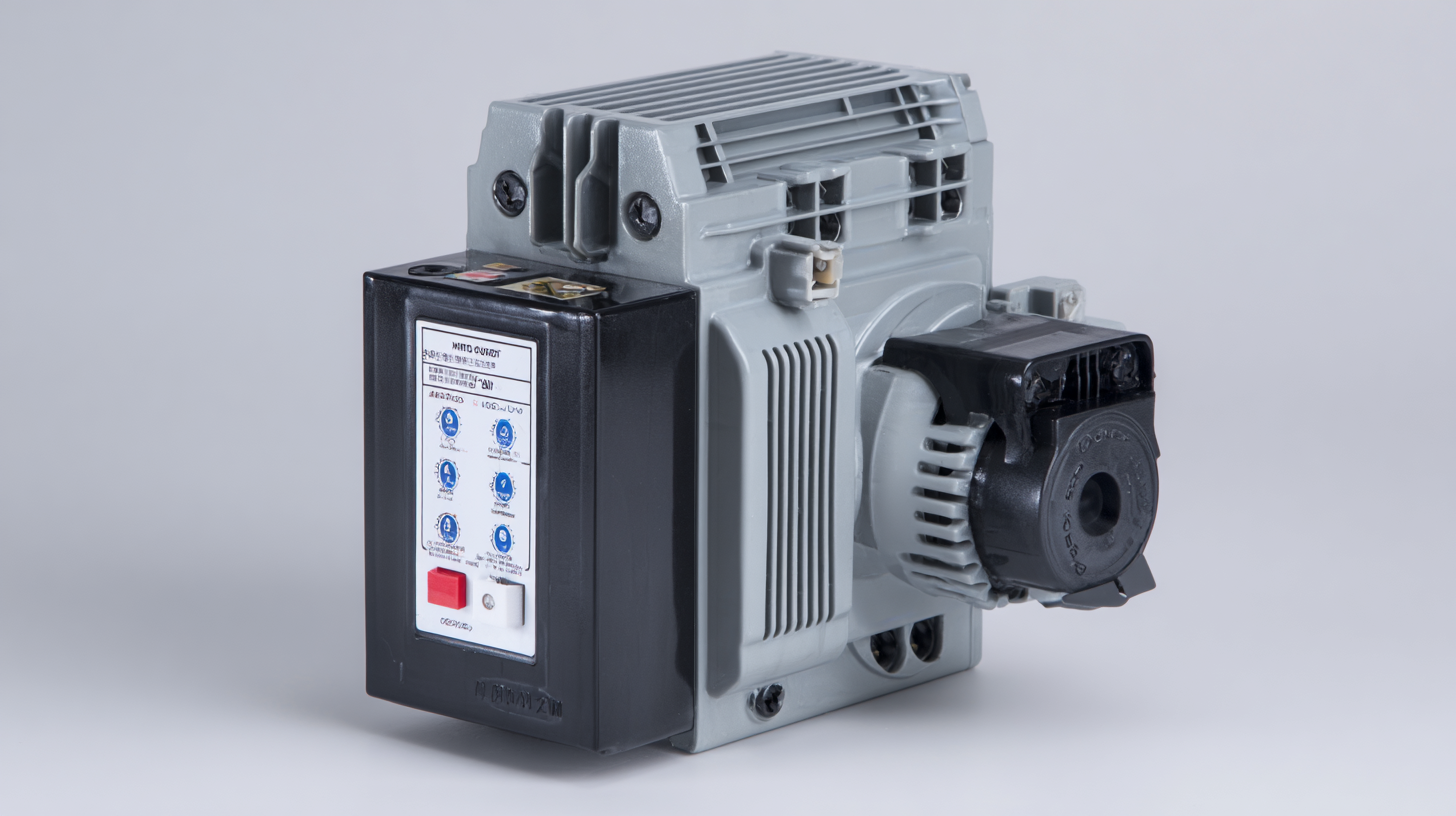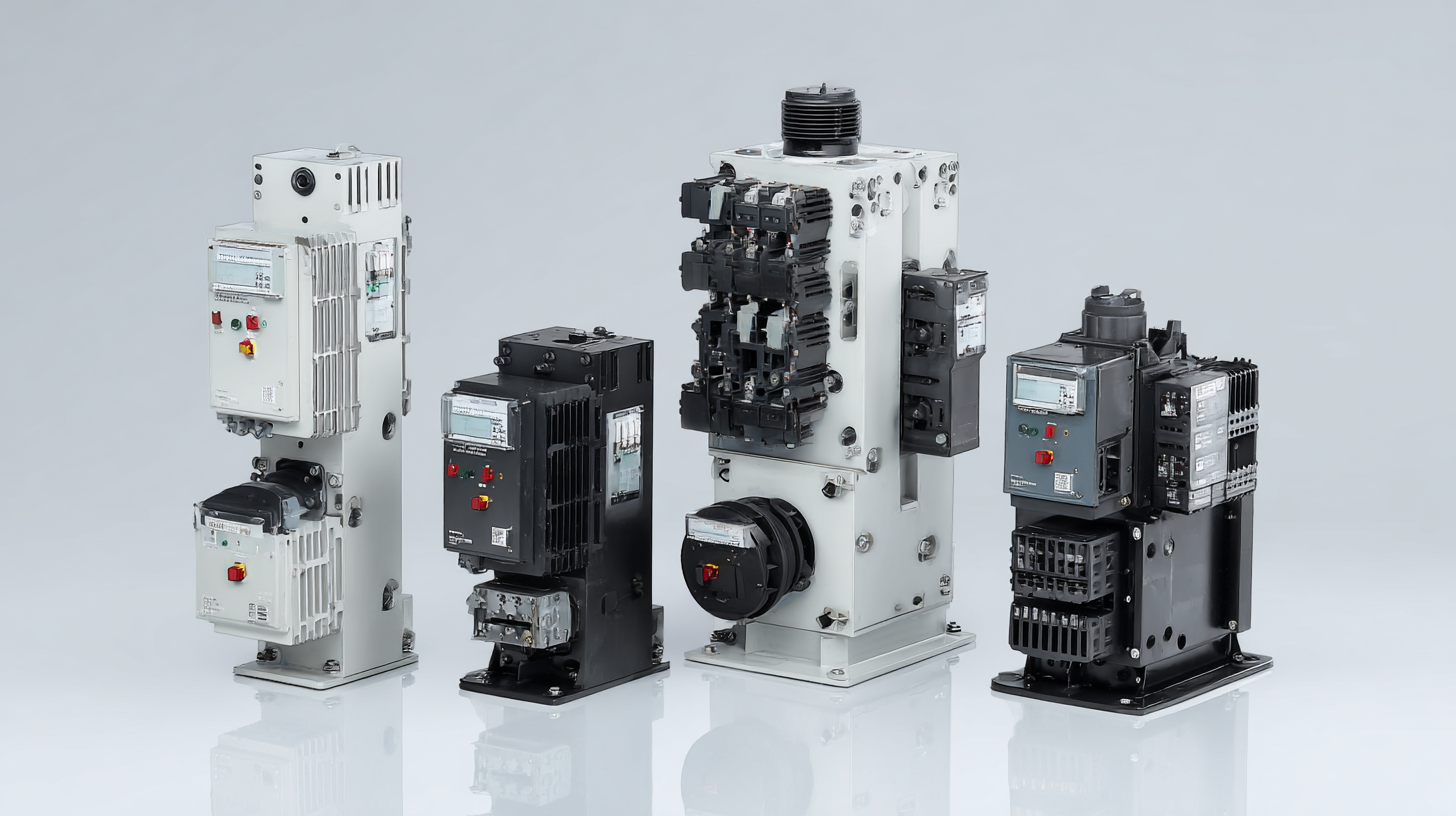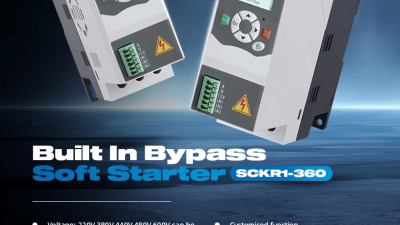10 Best 50hz 60hz Soft Starters for Efficient Motor Control
Table of Contents
- Overview of Soft Starters: Key Features and Benefits
- Understanding 50Hz versus 60Hz Soft Starters
- Top 10 Soft Starters for Enhanced Motor Performance in 2025
- Comparison of Leading Brands: Features and Pricing Analysis
- Industry Trends in Soft Starter Technology for 2025
- Choosing the Right Soft Starter for Your Motor Control Needs
- Exploring the Impact of Built-in Bypass Intelligent Motor Soft Starters on Energy Efficiency: Insights from Industry Reports
- FAQS
- Related Posts
In the world of industrial automation, getting electric motors to run efficiently isn’t just a detail—it’s a big part of better performance and lower energy use. 50 Hz and 60 Hz soft starters have really come into the spotlight lately. Research and industry chatter show that starting motors the right way can cut energy consumption by up to 30% and even extend the life of the equipment. Market reports point to solid global growth for soft starters, fueled by the growing demand for energy-efficient solutions in industrial apps. Zhejiang Chuanken Electric Co., Ltd. brings 15 years of hands-on experience in research, development, production, and sales of industrial automation control products. We’re at the forefront of this evolution. Our expertise with 50/60 Hz soft starters positions us well to take on the challenges of motor control, helping pave the way for more sustainable manufacturing and better overall efficiency.

Overview of Soft Starters: Key Features and Benefits
Soft starters are basically the quiet workhorses of motor control. They nudge the voltage up slowly at startup, giving the motor a gentle first move instead of a jolt. That slow ramp helps avoid nasty inrush currents that can crash the motor and mess with the broader electrical system. The International Energy Agency notes that cutting inrush can push motor life up by as much as 50 percent, underscoring how valuable soft starters can be in real industrial settings.
What soft starters bring to the table? You get adjustable start and stop times, handy torque control, and built in protections against overloads. They're designed to cut down mechanical stress on gears and bearings, which means less frequent maintenance. The Electric Power Research Institute found that companies using soft starters can slash energy costs by around 30 percent compared with old school direct-on-line starters. And beyond cost savings, this kind of efficiency boosts overall system reliability, making soft starters a smart move for teams chasing sustainable operations.
10 Best 50hz 60hz Soft Starters for Efficient Motor Control
| Model | Voltage Range | Current Rating | Control Method | Key Features | Benefits |
|---|---|---|---|---|---|
| Model A | 200-480V | 40A | Soft Start | Built-in bypass, LED status | Energy-saving, reduces inrush current |
| Model B | 220-600V | 75A | Soft Start & Stop | Adjustable ramp-up, protection features | Reduces wear, improves lifespan |
| Model C | 110-480V | 30A | Voltage Control | Compact design, digital display | Easy monitoring, space-saving |
| Model D | 220-440V | 50A | Current Limit | Thermal protection, integrated relays | Safe operation, prevents overheating |
| Model E | 230-690V | 100A | Soft Start with PFC | Power factor correction, high performance | Improves efficiency, lowers costs |
Understanding 50Hz versus 60Hz Soft Starters
When we're talking about motor control, choosing between 50Hz and 60Hz soft starters really matters for getting the best performance and efficiency. Soft starters play a key role in reducing inrush current and easing electrical stress on motors during startup, which helps extend their operational life. A market analysis from Allied Market Research puts the global soft starter market on track to grow at a CAGR of 6.8% from 2021 to 2027, signaling that more industries are adopting these devices.
The difference between 50Hz and 60Hz soft starters usually comes down to the operating environment and regional standards. For example, 50Hz is common in Europe and much of Asia, while 60Hz dominates in North America and parts of Latin America. That distinction affects how soft starters are designed and how they handle torque control and voltage capabilities. With 15 years in industrial automation, Zhejiang Chuanken Electric Co., Ltd. focuses on developing advanced soft starter solutions that work with both frequency standards, delivering reliability and efficiency in motor applications around the world.

Top 10 Soft Starters for Enhanced Motor Performance in 2025
In 2025, the field of motor control is set for a real upgrade, thanks to advanced soft starters that promise bigger efficiency and better performance. These devices play a crucial role in starting and stopping electric motors, dramatically reducing mechanical stress and helping equipment last longer. As industries push more into automation and energy savings, choosing the right soft starter can be the difference between smooth operation and a few stubborn hiccups. The top soft starters for 2025 will pack cutting-edge technology, delivering smooth and controlled acceleration and deceleration. Many of them come with smart features that help with energy management and diagnostics, keeping performance solid even when the load swings. For lines handling high inertia loads, like manufacturing and heavy machinery, these starters can be a real game changer, cutting energy use and reducing wear. When you prioritize performance and efficiency, you're looking at better productivity and meaningful cost savings in the year ahead.
Top 10 Soft Starters for Enhanced Motor Performance in 2025
This chart illustrates the motor efficiency percentages of the top 10 soft starters in the year 2025. The data highlights how each model performs, providing insights for selecting optimal soft starters for enhanced motor control and efficiency.
Comparison of Leading Brands: Features and Pricing Analysis
When you're choosing soft starters for 50 Hz and 60 Hz applications, it's helpful to understand what the top brands offer and how their pricing stacks up. A recent industry report from Mordor Intelligence puts the global soft-starter market on a growth trajectory—rising from about $1.6 billion in 2021 to around $2.3 billion by 2026—driven by the push for energy-efficient motor control across a range of industries. That kind of growth underscores why it's worth weighing different brands for their unique features and tech advances.
Leading players like Siemens, Schneider Electric, and Allen-Bradley offer a spectrum of soft starters with features that matter: built-in protection, customizable start profiles, and remote monitoring. Take Siemens’ Sirius line, for example—it combines overload protection with a compact footprint, which makes it versatile for many industrial setups. Price-wise, you’ll see basic models near $300, while options with more advanced capabilities can exceed $1,000. Those differences reflect the varied needs of customers in different sectors. By comparing the options carefully, businesses can pick a soft starter that not only boosts efficiency but also fits their budget.
Industry Trends in Soft Starter Technology for 2025
Looking ahead to 2025, the world of soft starters is set for a pretty meaningful transformation, driven by better efficiency and automation. A major trend is the heavier integration of smart tech into soft starters. Modern units now often come with built-in sensors and IoT capabilities, enabling real-time monitoring and diagnostics. That doesn't just improve efficiency; it also supports predictive maintenance, which cuts downtime and the costs tied to unexpected failures. Plus, with energy efficiency and sustainability taking center stage, manufacturers are designing soft starters that use less energy during startup. There is also a shift toward higher voltage ranges and refined electronic controls, which translates to smoother motor startup, less mechanical stress, and longer equipment life. As industries gear up for the future, soft starters are likely to play a pivotal role in boosting productivity while helping meet environmental goals—making them an indispensable tool in motor control.

Choosing the Right Soft Starter for Your Motor Control Needs
Picking the right soft starter for your motor control needs comes down to two things: how often you’ll run it and what your specific application requires. Soft starters work by ramping up the voltage and current to the motor, which means a gradual start–up and less wear on both the motor and the equipment. Industry reports show that using a soft starter can cut the start-up current by up to 50%, which translates to less electrical stress and better energy efficiency.
Here at Zhejiang Chuanken Electric Co., Ltd., we bring 15 years of experience in industrial automation to bear. We offer a broad range of cutting-edge soft starter solutions that fit different operating frequencies, including models for 50 Hz and 60 Hz. By getting a handle on your application's needs—whether you’re chasing high torque or a gentler load—you can pick the ideal soft starter to boost performance without compromising reliability.
Tip: Pay attention to the motor’s specs, like its nominal current and voltage. If you pick a soft starter that’s undersized, it may not handle the motor’s start-up current and could fail sooner than you’d like. Always have a chat with our experts and consider a load analysis to ensure the system is a good match.
Exploring the Impact of Built-in Bypass Intelligent Motor Soft Starters on Energy Efficiency: Insights from Industry Reports
The integration of built-in bypass intelligent motor soft starters is transforming the landscape of energy efficiency in industrial applications. These advanced starters not only facilitate smooth motor operation during startup but also significantly enhance protection against potential failures. The soft start protection function is specifically designed to safeguard motors, acting as a critical first line of defense. When a fault occurs—such as voltage fluctuations, power outages, or motor jams—the built-in protection mechanism triggers, ensuring the motor is stopped promptly to prevent damage and maintain operational integrity.
Industry reports indicate that utilizing soft starters with bypass functions can lead to notable energy savings. By minimizing the mechanical stress during the startup phase, these devices reduce peak energy consumption, allowing systems to operate more efficiently. Moreover, the intelligent monitoring capabilities embedded in these starters provide insights into motor performance, enabling predictive maintenance and further optimizing energy use. As companies strive for sustainability, investing in technology that enhances energy efficiency while protecting critical equipment is essential for operational success in today’s competitive market.
FAQS
: Soft starters are designed to reduce inrush current and manage electrical stress on motors during startup, thereby enhancing the operational lifespan of the motors.
The difference primarily relates to the operational environment, with 50Hz being common in Europe and Asia, and 60Hz prevalent in North America and parts of Latin America, affecting their design and functionality.
Key trends include the integration of smart technology, such as built-in sensors and IoT capabilities for real-time monitoring, along with an emphasis on energy efficiency and sustainability in designs.
Soft starters can reduce start-up current by up to 50%, significantly minimizing electrical stress and improving overall energy efficiency during motor operation.
It’s essential to consider the operational frequency, specific application requirements, motor specifications like nominal current and voltage, and any torque demands to ensure compatibility and reliability.
With real-time monitoring and diagnostics, modern soft starters facilitate predictive maintenance, helping to reduce downtime and costs associated with unexpected failures.
Yes, by controlling the startup process with reduced mechanical stress and improved electronic controls, soft starters can prolong the equipment's life.
Yes, consulting with experts and conducting a load analysis is advisable to ensure you select a soft starter that effectively meets your system requirements.
Related Posts
-

10 Secrets to Finding the Best Chuanken Soft Starter for Your Business Needs
-

Understanding the Best Chuanken Soft Starter Technology and Its Applications
-

Ultimate Guide to Choosing the Best Chuanken Soft Starter for Your Needs
-

The Ultimate Guide to Selecting the Best Vfd Controller for Your Industrial Needs
-

Understanding Industry Standards for Best Soft Starter Cabinet Selection Guide
-

Understanding Import and Export Certifications for the Best Vfd Control Board in Global Markets


